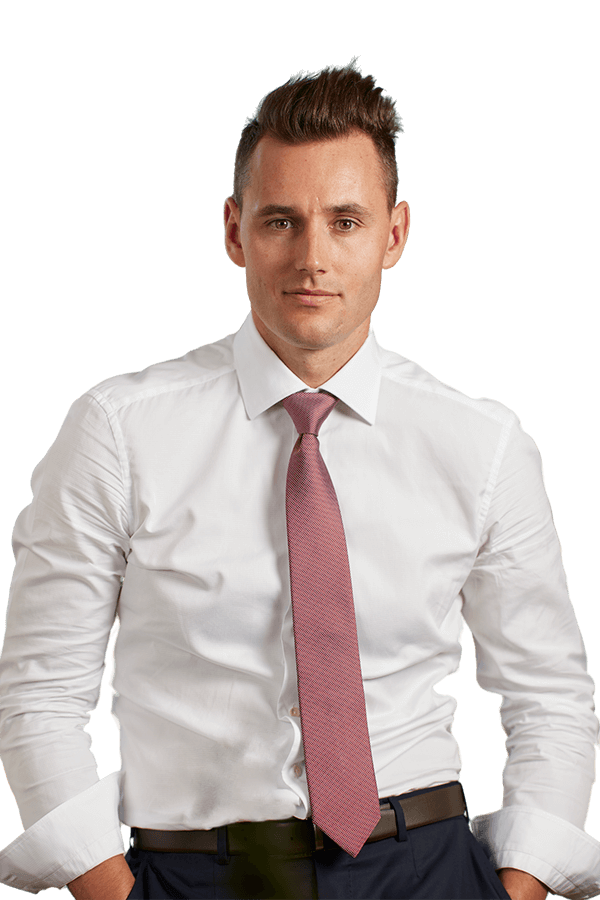Artificial disc replacement
Removing a damaged disc and replace it with an artificial one.
Artificial disc replacement key points
- Artificial disc replacement involves removing a damaged or worn out spinal disc and replacing it with a man-made artificial disc.
- Spine surgeons can replace spinal discs in your neck (cervical) and back (lumbar) with artificial ones.
- Modern technology and engineering have made this a safe, effective operation and tens of thousands of patients around the world have had this type of surgery.
Artificial disc replacement Brisbane
The spine surgeon said artificial disc replacement. What exactly is that?
This involves completely removing the damaged or worn out disc in your spine and replacing it with an artificial one made of titanium and medical grade plastics. These artificial discs are wedged between your spinal bones by the spine surgeon. The new disc then moves and behaves like a normal spinal disc.
A lot of high-tech engineering from around the world goes into making these artificial spinal discs. Modern designs are very good.
At this stage, stem cell technology to regrow natural discs without the need for an artificial one or a spinal fusion is many years off, despite the media hype.
Artificial spinal disc replacement surgery Brisbane
Is it successful?
There are many tens of thousands of patients around the world who have had artificial spinal disc replacement surgery and are very happy with the results.
The technology is now very good, and the surgical procedure for implanting them is routine for many surgeons.
However, the biggest factor determining success for artificial disc surgery is the decision making process. There are many things to weigh up when deciding whether to use an artificial disc or not. This decision making process is key and I will spend time weighing up all the factors, including your age, your scan results, your symptoms, the quality of life you want to live and the level of activity you want to maintain.

Spinal surgeon Brisbane
There is a famous quote in surgery: “Success is 20% physical skill and 80% decision making skill.” It is very true.
Artificial disc replacement surgery risks
Is it safe?
Yes, in experienced hands it is safe.
Modern technology and computer-guided systems have made this a safe and effective operation in the 21st century. Engineers from around the world continue to push the limits of this technology to help further improve this operation for your benefit.
With all this in mind, the main risks related to artificial disc replacement surgery are:
- The operation may not work; you may continue to have the symptoms despite the surgery. This is now quite rare.
- The artificial disc may break, move, or fail. Modern engineering has made this very rare.
- Bleeding; this rarely causes a problem.
- Infection; this is rare in modern surgical practice:
- Antibiotics. When these were invented in the 1940s, surgery was utterly transformed.
- Proper skin care during and after surgery. Healthy skin is a vital barrier to infection: ‘If you look after the skin, the skin will look after you!’
- Shorter surgery. While there is no cut-off point, it is well recognised that the more efficient the surgery, and the less time is taken, the lower the risk.
- General risk of the anaesthetic like clots in the legs, clots in the lungs, urinary tract infections, skin injuries from being on a bed for a long time, and heart or kidney problems. Modern anaesthetic medicine makes many of these risks very low.
I am committed to getting the best possible result for you and minimising the risks, which I will explain to you in detail. This also includes keeping regular contact with you during the recovery phase.
Generally, there are little if any long term artificial disc replacement side effects.
The reason artificial disc technology was first invented in the 1960’s and then refined in the 2000’s was to try to reduce the long term complications of spinal fusion surgery.
Often spinal fusion is the right procedure for a patient to have. Not everyone should have an artificial disc. There are many factors to consider, including your symptoms, your examination findings, scan results and lifestyle. I will work through all of this with you during an appointment. Contact my team if you would like to make a booking.
It is one of the most common spinal surgery techniques in Australia and indeed the world. There are tens of thousands of artificial disc replacements that have been performed around the world.
I perform this in both the neck and back.
I perform this as keyhole surgery so recovery is quite short, often a few days to 1 week or so. The goal is to have you back to the quality of life and level of activity that you want.
An artificial disc can be placed in either the neck (cervical artificial disc replacement) or the back (lumbar artificial disc replacement).
The procedure is exactly the same as for a fusion. Both the neck or lower back, depending where the artificial disc is to be placed, is appraised from the front.
The tissues are gently dissected free to expose the front of the spine. The spinal disc in question is then completely removed. Now the surgeon is literally looking at an empty space between two spinal bones. If they are performing a fusion, then a permanent space gets placed. If they are performing an artificial disc replacement then the artificial disc device is inserted into the space.
The artificial disc is not screwed into place, as this would prevent the disc from allowing the spine to move properly. Instead, it has multiple small teeth in its top and bottom surface that grip into the bone and prevent it from slipping over the ensuing years.
Surprisingly not much. The beauty of this type of spinal surgery is there is very little injury to your spine overall. It is a true keyhole operation.
Alternatives to disc replacement surgery
What if I don't have surgery?
This depends on what you are having the surgery for. I will discuss the option of no surgery with you.
Are there any other good options?
There certainly are. I will go through these with you when I see you and assess your condition, scans and lifestyle.
Artificial disc replacement recovery time
What can and can't I do afterwards?
Recovery is fairly quick. It is very common however to stay 1 or 2 nights in hospital.
To get the best result you need to commit to a full recovery period. Recovery is like compound interest; if you do the time, you’ll get the best result. If you shortchange yourself and bail out early you will miss out on significant benefits long term.

Spinal surgeon Brisbane
But this does not mean you will be just resting during the recovery. I will encourage you to be as active as possible. It is very important to get your confidence back as soon as possible, and you will be surprised how much you are allowed to do straight after surgery.
I will take you through all this specific to your case when I see you.
The scar for this type of surgery heals very well. I have performed it on people who work on TV. They are very happy with the appearance. In about 3 months it will be a struggle to even see it.
There is a small cosmetic suture to remove at one week mark. I will do this in my rooms. All the arrangements will be made for you.
I recommend a minimum of 2 weeks off work to get your confidence back and feel comfortable.
Physiotherapy is very useful to loosen up your muscles after surgery. I will liaise directly with your own physio (if you have one) to ensure we achieve the best outcome possible.
Spinal surgeon Brisbane
What else do I need to know?
If you would like me to assess you and your condition please contact my team to book an appointment.
Ready to make an appointment?
Ramsay Specialist Centre
Suite 325
Newdegate St
Greenslopes QLD 4120

